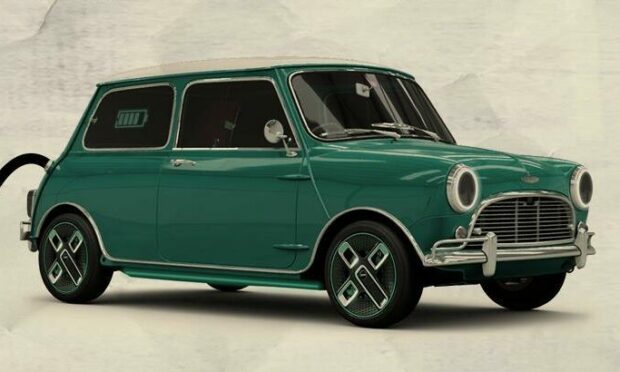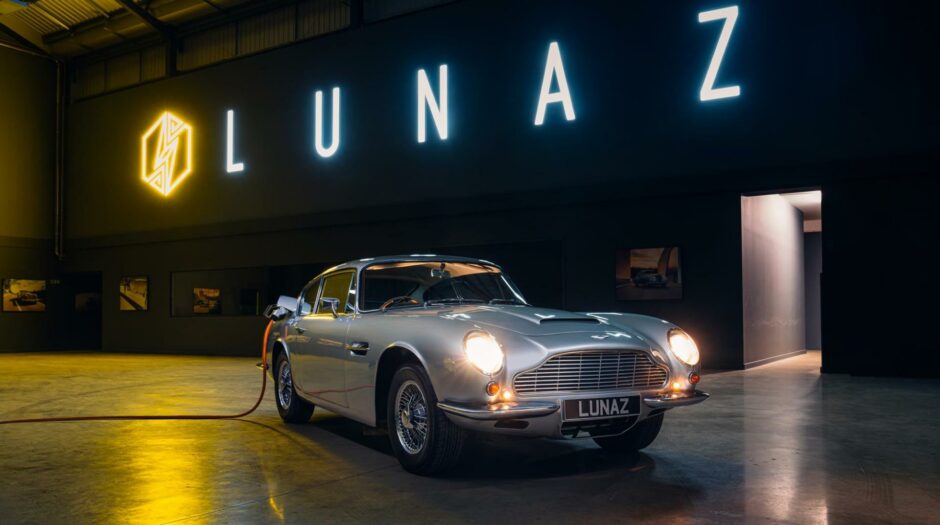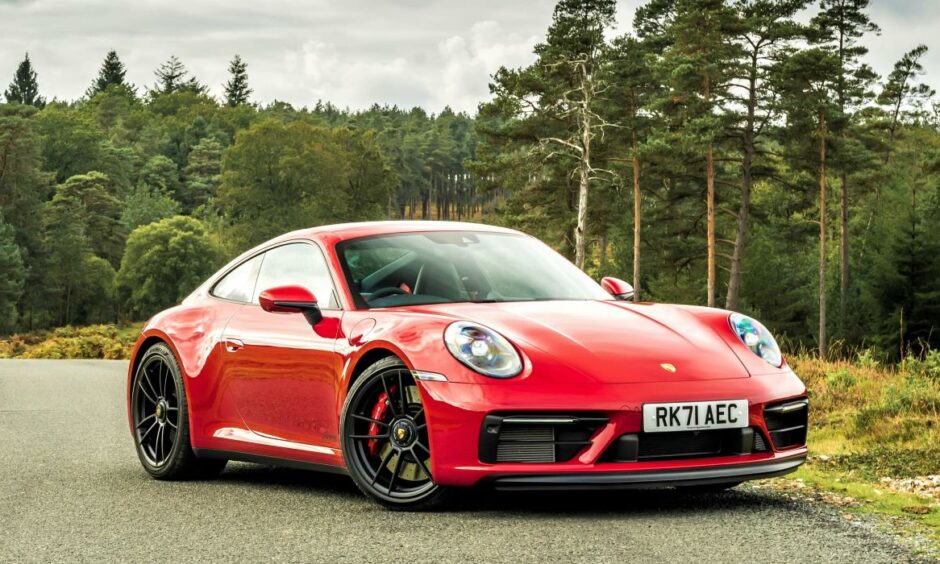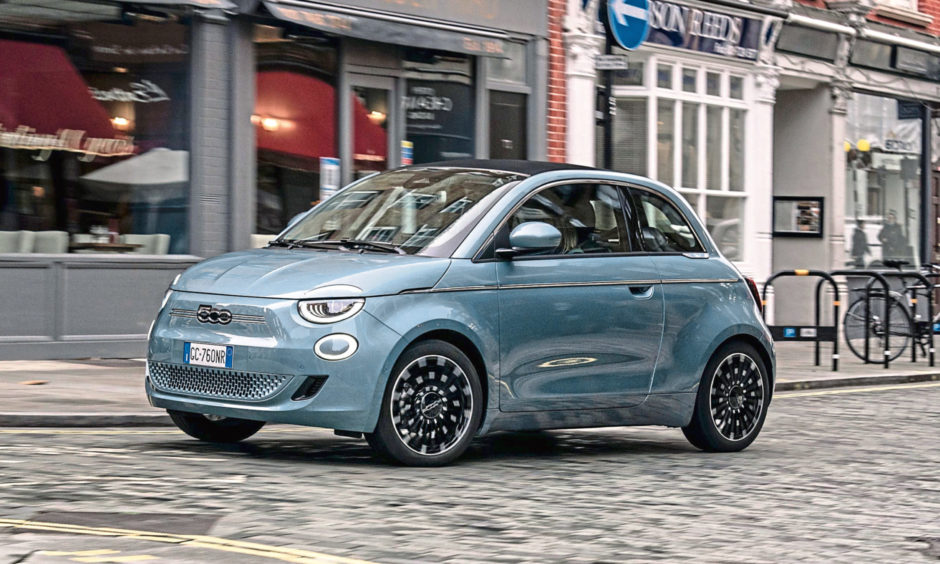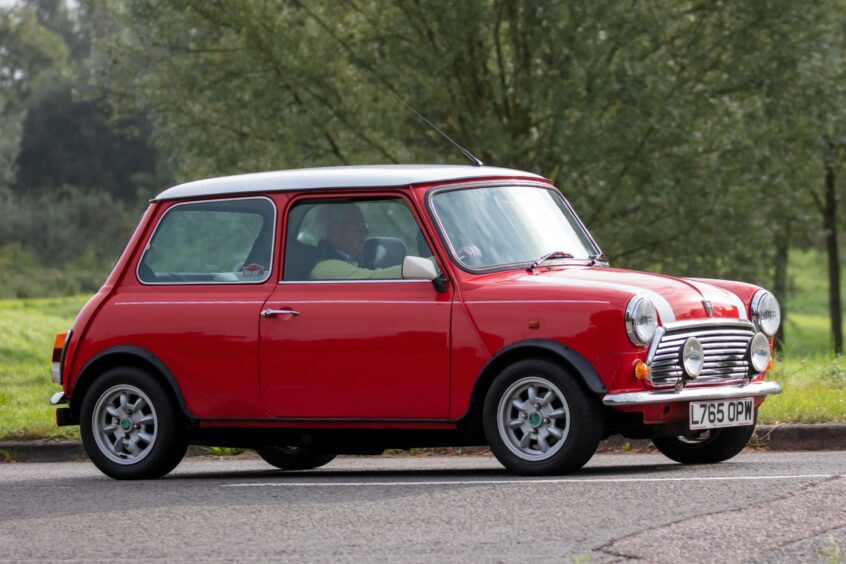In the modern age, there’s less room for nostalgia.
Nobody with a smartphone needs a pager, while the dawn of GPS and satnavs puts paper maps in the backseat.
However, despite the swift electrification of cars, it seems there’s still plenty of time and fondness for retro motoring – and some entrepreneurs have found a way to make electric match vintage.
A growing number of UK startups and specialists are taking classic cars and replacing their traditional powertrains with battery packs and electric motors.
But can it add value or profit to the car? To find out, leasing experts Vanarama looked at the value changes for a range of EV classics, with input from the world’s largest converter, Electric Classic Cars.
Converted EV classic cars worth up to 20 times more
Despite having the joint-cheapest standard cost at £5k, the MG MGB Roadster has the highest value change of more than 2,000%.
The battery-powered two-seater, created by bespoke EV builders RBW, has an asking price of £108,000, 20 times more than the original.
But higher EV prices don’t necessarily indicate a higher value increase. An electric Aston Martin DB6, close relative of the car made iconic by James Bond, will set you back just over £730,000.
Bafflingly, the DB6 shows the lowest price increase of any model in the research with a gain of ‘only’ 129%, due to the DB6 already being a highly sought-after classic, especially in standard form, with non-electric prices averaging £320k.
Less valuable classics, such as the Nissan Bluebird and Rover Mini, offer more potential for profit. Despite standard pricing sitting around £5,000 and £10,000 respectively, models converted to electric are showing jumps in value of 700%.
Conversion could cost over £180,000
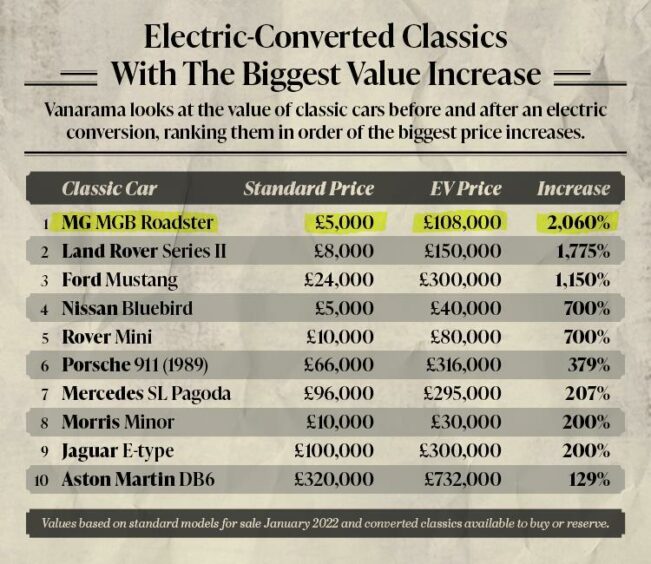
Although some of the value increases suggest there’s shrewd business to be had in the EV conversion game, they don’t reflect the costs in doing so. While conversion kits are available from around £10k, that fee often doesn’t include all components (motor, batteries, charger etc.) or even the cost of getting someone to fit it.
And when it comes to the really high-end classics, such as the Jaguar E-type or previous generations of the Porsche 911, you may be better off paying a custom builder one bill to sort the lot. Which is exactly what Electric Classic Cars, the world’s largest converter of classic to electric, does.
Jon Peck, customer liaison at their Wales workshop, said: “Although there’s scope for making profit, for most customers we speak to it’s a labour of love.
“With some examples, such as a 1970s Porsche 911 or Mercedes-Benz SL 190, the cost of conversion can come close to or even exceed the value of a standard model in good condition. An ongoing SL 190 project we have is currently looking like £180k all in.
“But that’s irrelevant for most of our clients, as they’d never even entertain the idea of selling their prized cars – they just want to enjoy it in a more sustainable way, without the time-consuming maintenance of a decades-old vehicle.”
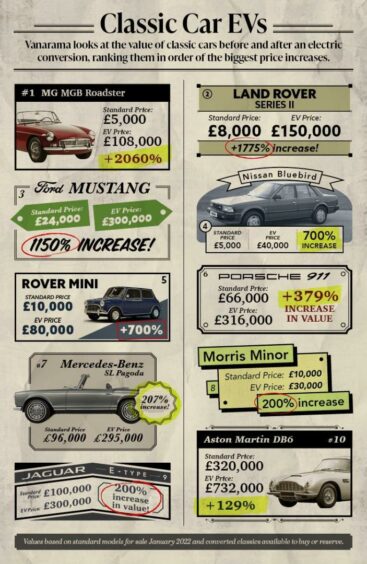
Converting classics can improve performance
Those considering the effect a heavy battery pack on the handling and driving pleasure of a vintage motor needn’t worry, either.
In many cases, Jon believes their work can have the opposite effect: “We often find that our conversions leave the workshop lighter than they arrived, making for improved use of power and handling.
“We also keep a close eye on weight distribution, and through the careful placing of batteries and motors we can get closer to 50:50 than the manufacturer managed. Especially with the sports cars we work on, maintaining an engaging drive is crucial.”
When asked if there was room for profit in converting classics to electric, he said it’s possible if the donor car is carefully selected.
“We would never rule out this sort of thing for profit – if you pick the right car to start with, there’s definitely potential,” he said. “An original Fiat 500 in good condition will cost around £7k-£15k, with an additional £30k for the electric conversion. In terms of repurposed classics, £45k all in may well have headroom for selling on.”
Five tips for converting classic cars for profit
- Set a budget: Conversion kits and the work itself can quickly add up.
- Choose the right car: Consider cars with a post-conversion cost that’s not too far off the price of a non-electric example – this way, buyers are less likely to opt for a standard model that’s a lot cheaper.
- High-mileage model: Cars with a higher mileage are generally lower in value to begin with – this gives you the best profit margins.
- Avoid run-down models: A car in decent order – especially chassis and bodywork – will save money on restoration, which can cost as much as £100k or more.
- DVLA eight-point rule: When altering or modifying a car, the DVLA has specific requirements for keeping its original reg. Not following those results in greater costs and perhaps even less desirability, due to having less in common with the standard model.
